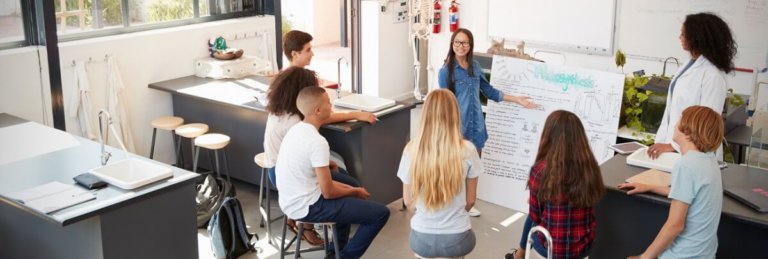
There many learning and development benefits for students when their teachers employ creative, project-based activities and technology in the classroom, a new study has found.
Frequent assignments that require K-12 students to think creatively are much more likely to result in higher-order cognitive skills, according to teacher’s observations in Gallup’s Creativity in Learning report. These skills include problem-solving, critical thinking, retention, making connections between different subjects and deep learning of subject matter.
“More than 75 percent of teachers who practice creativity in learning say their students often demonstrate problem-solving skills, versus less than 60 percent of teachers who use these techniques less often,” said the report.

Creativity is one of the most sought-after skills for companies today. Source: Shutterstock
Creativity wasn’t always a prized and teachable skill in schools and colleges. But as more reports reveal the drawbacks of standardised tests and the need for creativity in the coming Fourth Industrial Revolution, it’s now regularly listed as one of the top 10 skills students need to survive a rapidly changing world. According to analysis from networking site LinkedIn, the top soft skills companies need most in 2019 is creativity. This chimes with the findings in the World Economic Forum’s 2018 The Future of Jobs report, which concluded that “human” skills like “Creativity, originality and initiative” are likely to increase in value as technology and automation advances.
Responding to these market demands, more schools are paying attention to the need to produce creative students. There are many ways creativity can be taught but in this study, Gallup determined creativity by the frequency with which teachers report allowing students to do each of the following: 1) choose what to learn in class; 2) try different ways of doing things, even if they might not work; 3) come up with their own ways to solve a problem; 4) discuss topics with no right or wrong answer; 5) create a project to express what they’ve learned; 6) work on a multidisciplinary project; 7) work on a project with real-world applications; and 8) publish or share projects with people outside the classroom.
Despite the pay-offs, most of these do not see the light of day in schools. Nearly three-fourths (75 percent) of students said they spend too little time choosing what they learn in class. More than four in 10 say they spend too little time demonstrating what they have learned in creative ways (44 percent) or trying new ways of doing things (43 percent).
Technology helps
Adding technology to creative learning results in even greater benefits if used in “transformative ways”. This includes tablets or computers to create multimedia projects, conducting research, analysing information and creating complex projects that cross disciplines.
“Teachers rate project-based, technology-enabled assignments as better for a wide range of student outcomes. For example, more than eight in 10 teachers say projects that incorporate technology in transformative ways are better than traditional assignments for personalising students’ learning, giving them ownership over their learning and helping them connect it to the real world,” states the report.
Creativity supported by transformative technology use helps students achieve positive learning outcomes. Read our new report to learn how to foster creativity in the classroom. https://t.co/zLAteNTe2D #CreativityInLearning #EdTechChat pic.twitter.com/wVwcK02jIM
— Gallup (@Gallup) October 28, 2019
Merely using technology in substitutional ways (replacing paper and pencil with tablets or computers to do the same tasks) do not lead to the same results. The study found that 85 percent of teachers who focus on creativity in learning and use technology in transformative ways say they often see their students engage in problem-solving. Among teachers who use technology in substitutional ways, this figure drops to 75 percent and to 50 percent among teachers who use neither creativity nor technology in transformative ways in the classroom.
For this report, Gallup conducted a nationally representative online survey of 1,036 K-12 teachers and online surveys of 2,673 parents of students in grades K-12, as well as 853 students in grades six to 12.
Liked this? Then you’ll love…
Quiz: Which type of creative learner are you?
5 creative arts school Instagram accounts students love to follow







